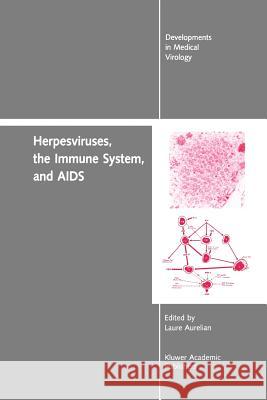Herpesviruses, the Immune System, and AIDS » książka
Herpesviruses, the Immune System, and AIDS
ISBN-13: 9781461288107 / Angielski / Miękka / 2011 / 377 str.
Shortly after the reeognition of the aequired immunodefieieney syndrome (AIDS) in 1981 (1-3), it was hypothesized that herpesviruses may play an important role in the etiology or pathogenesis of this newly identified syndrome (4,5). This theory was based on the faet that infeetion with herpesviruses was a prominent elinieal feature in nearly all patients with AIDS (3-5). Chronie mueocutaneous herpes simplex virus (HSV) infections were one of the first opportunistie infeetions deseribed in patients with AIDS (3), and both cytomegalovirus (CMV) and HSV infections were extremely common in individuals identified to be at highest risk for aequiring AIDS, such as homosexual men, intravenous drug users and hemophiliaes (4-8). CMVand Epstein-Barr virus (EBV) were also prominent infeetions whieh were suspected as possible etiologic agents of the prolonged fever, wasting, and Iymphadenopathy that often precedes AIDS, frequently referred to as the chronie Iymphadenopathy syndrome (9,10). Subsequent elinieal studies have indeed demonstrated that infeetions with HSV, CMV, EBV, and even varieella zoster virus (VZV) are frequent opportunistic infeetions wh ich oeeur among AIDS patients (11-14). Several of the opportunistie infeetions caused by herpesviruses include encephalitis, chorioretinitis, hairy leukoplakia, esophagitis, enteritis, colitis, Burkitt's lymphoma, primary CNS lymphoma, zoster, and there has even been speculation about the role of CMV in the pathogenesis of Kaposi's sareoma (15,16). Furthermore, the herpesviruses, partieularly CMV and EBV have been known to be strongly associated with immunosuppression, partieularly of cell-mediated immune functions, which further supported the hypothesis that herpesviruses may contribute to the immune defects that eharacterize AIDS.











